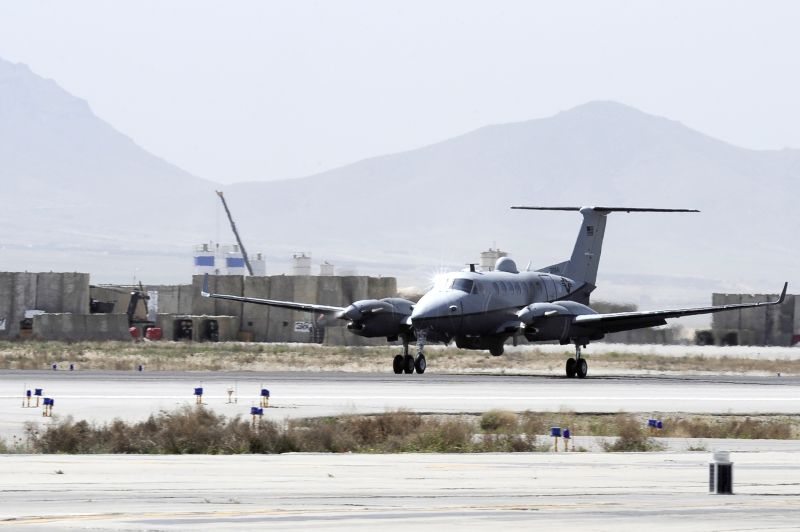Airmen from the 4th Expeditionary Reconnaissance Squadron here achieved three major milestones in the month of October supporting Operation Enduring Freedom.
The squadron, which operates the MC-12 Liberty, surpassed 10,000 sorties flown, 50,000 flight hours and supported ground operations that led to the capture or elimination of more than 4,000 targets.
“The program was brought to Bagram (Airfield) in June 2009 and in less than two years with roughly two dozen airplanes we’ve been able to fly 10,000 sorties and 50,000 flying hours,” said Lt. Col. James Thompson, the 4th ERS commander. “It’s been amazing. According to Headquarters Air Force, we are the No. 1 sortie rate per manned aircraft in the Air Force. ”
In April 2008, then Secretary of Defense Robert M. Gates established a Defense Department-wide Intelligence, Surveillance and Reconnaissance Task Force to identify and recommend solutions for increased ISR assets in the Central Command area of responsibility. Gates tasked Air Force officials July 1, 2008, to acquire 37 C-12 aircraft to augment remotely piloted aircraft.
“If you take a look at the start of the MC-12 Liberty program, it was created in about six months,” Thompson said. “Because of the speed at which this platform was brought to the fight, the program was named in honor of the Liberty Ships, which were mass produced during World War II.”
According to Thompson, the MC-12 is the workhorse of the Air Force. Aircrews hit the maximum flying hours authorized every month, he said. Airmen from the 4th ERS work seven days a week, with virtually no days off for six months.
Not only do the Airmen work every, day but so do the aircraft. An F-16 Fighting Falcon or F-15E Strike Eagle is typically retired when it hits approximately 8,000 flying hours. In the two years since the program was created more than 4,000 hours have been put on the MC-12s.
To maintain proficiency of the pilots and crews during combat operations, Thompson instituted a simple process he said he learned as an air officer commanding at the United States Air Force Academy.
“The way we do it is to have the seniors teach the freshmen,” Thompson said. “The first month your job is to study. The second through fifth months your role is to work, and the final month is to teach the new folks. By making it a cyclical process, it only continues to improve and get better.”
With this basic program in place, the squadron has doubled the number of sorties flown since Thompson arrived in November 2010, with the same number of aircraft, and increased flight times by 20 percent. Combined with new tactics and procedures, the unit members have more than doubled the amount of support provided to troops on the ground.
“Ours is but a small piece in the puzzle,” Thompson said. “This is an 100 percent support asset, and our motto is the customer is always right. We’ve received countless feedback — things like ‘We don’t want to operate without you,’ or ‘You are a godsend.'”










